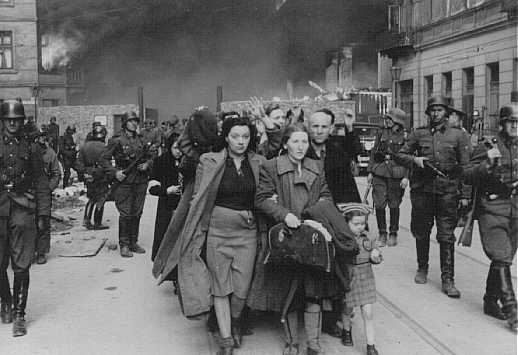Snyder, Timothy. Bloodlands, Basic Books, New York, 2011 (544pp. $29.95)
The unraveling of the Soviet Empire, the unchaining of Eastern Europe, and the rise of independent-minded countries on the dung heap of formerly communist territory, have all contributed to a new historiography focusing on a wealth of material previously unavailable to scholars and researchers who study World War II. Timothy Snyder, a professor of history at Yale, a prizewinning writer and expert on Polish history and culture, has written a sweeping and detailed account of what constitutes the worst mass murder of that war, a war that saw many mass murders. His account, using monographs, articles and archives in German, Russian, and Polish, is a unique chance for English-language readers to achieve new levels of historical understanding.
Like his contemporaries Simon Sebag Montefiore, Richard Pipes and Ian Kershaw, each of whom exploit their highly individualized research skills to examine documents from the Soviet, German and East European communist archives (along with diaries, letters, notes and personal interviews, Snyder presents a different view of World War II, one which is oblique to most Americans who comprehend the war as a testing ground for America’s “greatest generation”, a war to avenge Pearl Harbor, or a crusade to liberate France.
No, the real killing grounds were the Bloodlands of this book’s title, roughly Poland, the Baltic States, Ukraine, Belarus and parts of Rumania. In those benighted lands the Nazi and Stalinist regimes murdered more than 14 million people. These murders began with systematic famines inflicted on Ukrainian peasants by Stalin in the name of ideological collectivization, which claimed 3 million dead, mostly “Kulaks” and other peasants. In Stalin’s Great Terror, some 700,000 Poles, eastern Germans, Ukranians, and Belarusian nationalists and other minorities were shot. During 1939-1941, when the Soviets and Germans shared control of a partitioned Poland, they shot 200,000 Polish intellectuals, teachers, labor unionists, lawyers, clergy, and nationalist workers.
Later, when the Eastern Front matured, German and Soviet armies murdered 4 million more in occupied lands, including the Baltics. The Romanians and Hungarians killed Jews. In Ukraine and Belarus, the Germans shot and gassed 4 million Jews.
Our perspective on this killing must change, according to the author. We have focused for many years on the Germans and their concentration camps. In fact, comparatively less killing was done in concentration and labor camps inside Germany. In all, perhaps 200,000 German Jews were murdered inside German territory. But the vast majority of Jewish deaths occurred in the Bloodlands. Hundreds of thousands of Soviet prisoners of war perished in tiny barbed wire enclosures during winter from cold and hunger. Poland was occupied twice. The Soviets and Germans actually cooperated in the destruction of Warsaw, each seeing an advantage to its disappearance as a major European city.
To understand mankind’s worst catastrophe seems a difficult task. Snyder has written a painstakingly researched book which manages to strike a balance between superb scholarship and gut-churning drama. To say that the horrors depicted in this book demand a strongly gifted storyteller is an understatement. By combing archives, depicting the victims as individuals and not numbers or statistics, and by exposing the interior motives of both Hitler and Stalin, Snyder has produce a unique work, something brand-new, riveting and monumental.
It is hard enough to contemplate all this death. Snyder comes as close as any historian before him to enlarging our view of the proceedings by asking the hard questions. How could Europeans have done this? Who were the dead and why were they killed? What metaphysic sustains such action? These contemplative undertakings are exemplified by Russian novelist Vasily Grossman’s own discoveries when (in 1945) as a Red Army soldier—trekking across the waste of Treblinka in central Poland, site of a death camp, Grossman unearthed the remnants: photos of children in Vienna and Warsaw, Ukranian embroidery, a sack of blonde and black hair. Peasants were digging everywhere in the earth, sifting out crushed bones, teeth, clothes, seeking Jewish gold.
It is Snyder’s opinion that only when we understand what actually happened can we probe our way forward into the darkness of these inquiries. He has made an admirable contribution towards seeing what happened and how human beings justified their killing.


